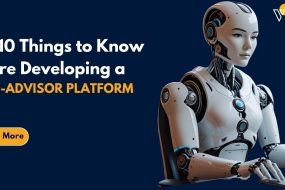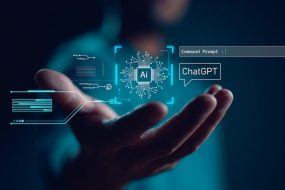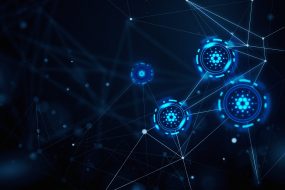
Reinforcement learning is a type of machine learning that allows agents to learn complex tasks by interacting directly with their environment. Traditionally, reinforcement learning agents are taught through trial and error using rewards and punishments. However, human feedback provides a more intuitive way for agents to learn by mirroring how humans and animals acquire new skills. Reinforcement learning from human feedback, or RLHF, is an emerging area of research that combines the power of reinforcement learning with guidance from people. With RLHF, agents are trained directly by human teachers who provide feedback on the agent’s behaviors. This feedback is then used to refine the agent’s decisions over time to optimize for the goals and preferences humans communicate.
What is RLHF?
Reinforcement learning from human feedback is a machine-learning approach that enables AI systems to improve based on evaluations from people. Unlike typical supervised learning which relies on large datasets of pre-defined labels, RLHF allows agents to learn from rewards and punishments signaled by humans during a conversation or task completion. The goal is to maximize the ‘reward’ the agent receives over many feedback iterations, shaping its behavior to become more cooperative and satisfactory to users. This process emulates how humans learn best practices through a combination of trying new things and receiving live input on their performance.
RLHF balances the accuracy of supervised learning with the flexibility of reinforcement learning to handle open-domain, undefined problems where human preferences matter most. It holds the potential for continuously optimizing AI assistants that can understand and enact the nuanced goals of their human partners.
How Does RLHF Work?
RLHF works in three main steps:
Select a pre-trained model
The first step in building an RLHF system is selecting an appropriate pre-trained language model. This initial model provides the foundation for basic conversational abilities before fine-tuning. Suitable models would have been extensively trained on vast amounts of text using an unsupervised technique like Transformer architectures. They learn the syntactic and semantic patterns of language which allows for coherent responses without any labels.
Popular options include GPT-2, GPT-3, BERT, and variants which have billions of parameters after ingesting text from the internet. The pre-trained model size and capabilities will affect how quickly it can adapt to human feedback, so a more powerful model trained on massive datasets is preferable. Researchers and engineers will evaluate different options to find the most suitable model that balances size, cost, and baseline performance for their application and design goals.
Human feedback
After deploying the pre-trained model, the next key step is collecting human feedback on its responses. Users will interact with the model through natural conversations on open domains or guided assistants for specific tasks. After each response from the model, humans provide brief input on the quality of the response, such as choosing an emoticon rating (e.g., thumbs up, down), answering a 3-5 option survey question, or leaving a short textual comment.
This feedback indicates if the response was helpful, harmless, and honest from the user’s perspective. It signals what the model should be rewarded or discouraged from doing similar in the future. Ratings need to be efficient to collect at scale but still provide meaningful signals. The feedback is logged along with the context to train the model through RL techniques.
Fine-tuning with reinforcement learning
After collecting human feedback, the next step is to use reinforcement learning algorithms to update the model’s parameters. The goal is to maximize the model’s expected long-term “reward” from users, as indicated by their ratings. At a high level, policy gradient methods are commonly used. These evaluate which responses received positive versus negative feedback, and then adjust the model’s internal weights to make positive responses more likely and negative responses less likely in the future.
Specific algorithms like REINFORCE or Actor-Critic methods perform these weight updates. Many feedback-response examples are processed with mini-batch training to fine-tune the model. With each round, the model becomes better calibrated to please humans. This fine-tuning refines the pre-trained abilities based on real-world user experiences.
Applications of Reinforcement Learning from Human Feedback
Here are some potential applications of reinforcement learning (RL) techniques that learn from human feedback:
- Dialogue systems: An RL agent could engage in conversational dialogue with humans. By observing how humans respond to the agent’s utterances, it learns to have more natural and engaging conversations over time.
- Game playing: Humans could provide feedback like wins/losses to teach an agent to play games like Go, chess, or video games. AlphaGo used RL guided by human experts to master the game of Go.
- Robotics: A robot could perform tasks like picking up objects and asking humans for feedback on its motions and grasp. This feedback could improve its ability to safely and effectively manipulate objects.
- Computer-aided design: An RL agent could generate design concepts and prototypes, getting feedback from human designers on aesthetics, usability, manufacturability, etc. to iteratively create better designs.
- Personal assistants: Digital assistants like Alexa, Google Assistant, etc. could learn from implicit human feedback via continued usage. Things like completion of tasks, customer satisfaction surveys, and retention/usage over time could shape the assistant’s future behaviors.
- Education/training: Interactive learning/training applications could apply RL guided by a human trainer/instructor to optimally adapt based on student performance and feedback for individualized instruction.
- Online content recommendation: Websites could use RL to optimize for user engagement, satisfaction, time on site, etc. based on implicit feedback signals from human users and their behaviors.
The Benefits of RLHF
Here are some key benefits of using reinforcement learning techniques that learn from human feedback (RLHF):
- Natural way for agents to learn: Humans provide feedback intuitively through rewards/penalties like they would to other learners. This mirrors how humans and animals naturally acquire skills.
- Handles sparse/complex goals: RLHF can optimize for complex, long-term goals that may be difficult to explicitly program. Humans implicitly convey priorities through feedback.
- Adapts to individual humans: Agents can tailor their behavior based on feedback from specific users, rather than one predefined objective. This improves personalization.
- Robust to incomplete specifications: Exact assignment specifications can be unknown, ambiguous, or traded through the years. RLHF doesn’t require specifying the environment version.
- Enables open-ended learning: Agents can continuously update and enhance their talents through ongoing remarks from users all through deployment. This helps existence-long learning.
- Scales to real-world complexity: RLHF sellers can research directly from interaction with humans in real complex environments like towns, homes, offices, and so forth. Without relying on simulated education environments.
- Fosters collaboration: RLHF encourages cooperative co-advent between people and AI retailers to reap mutual know-how and achieve shared goals through remarks talk.
- Increases transparency: Humans preserve oversight and management of the studying process through intuitive comment mechanisms. This helps deal with troubles like algorithmic bias, privateness, and explainability.
Limitations of RLHF
Here are some potential limitations of reinforcement learning from human feedback (RLHF):
- Data requirements – RLHF might also require massive amounts of first-rate remarks data from humans to train retailers efficaciously, which will be highly priced or time-consuming to acquire.
- Feedback sparsity – It may be difficult for people to offer common, regular remarks all through every agent’s action or decision. Feedback can be sparse or delayed.
- Human errors – Humans may additionally unintentionally provide incorrect, inconsistent, or ambiguous feedback at times, probably hindering gaining knowledge of development.
- Scalability issues – It may be hard to use RLHF to troubleshoot massive kingdom/movement areas due to the need for human judgment at schooling time.
- Interpretability problems – The hyperlink between comments and emerging agent behaviors won’t be obvious or explainable to outsiders in complex, deep RL scenarios.
- Shifting goals – Humans’ perceptions, priorities, and assignment definitions can evolve, making formerly learned behaviors not choicest.
- Ethical concerns – RLHF should doubtlessly be used to govern or exploit humans if agents are educated to acquire certain forms of remarks rather than optimize for human well-being.
- Privacy challenges – Large amounts of personal human data like feedback, demographics, and implicit responses would need to be collected, stored, and analyzed in ethical ways.
- Lack of generalization – Agents may overly specialize in individual feedback providers and not generalize well to new users without further training.
Careful system design is needed to address RLHF’s data needs, scalability, interpretability, and potential ethical issues regarding human subjects.
Future Trends and Developments in RLHF
Here are some potential future trends and developments in reinforcement learning from human feedback (RLHF):
- Multi-agent RLHF systems – Agents cooperating/competing to complete tasks based on collective human guidance.
- Online, interactive RLHF platforms – Allowing continuous, real-time human feedback to guide open-ended agent learning.
- Lifelong RLHF – Agents that can autonomously seek out and apply human feedback over months/years to incrementally refine skills.
- Limitation and apprenticeship learning methods – Combining human demonstrations with feedback to more efficiently train complex skills.
- Multi-modal feedback – Leveraging diverse feedback sources like language, gestures, facial expressions/emotions in addition to rewards.
- Personalized agents – Tailoring RLHF training for highly customized, one-to-one agent-user relationships.
- Explainable RLHF – Developing interpretable, transparent models to communicate agent learning progress and decisions.
- Transfer learning techniques – Enabling agents to generalize feedback experiences across related environments/tasks.
- Combining RLHF with other methods – Augmenting RLHF with self-supervised learning, generative models, theory of mind, etc.
- Distributed RLHF systems – Leveraging cloud/edge computing for massive, collaborative human-AI training initiatives.
- Ethical frameworks for human subjects’ research – Ensuring privacy, autonomy, and well-being in expansive applications of RLHF.
So in the future, RLHF will become more scalable, adaptive, personalized, and transparent as these types of developments continue to advance the field.
Conclusion
RLHF holds great promise for building AI systems that can learn efficiently from natural human interactions. By leveraging human judgment alongside data-driven algorithms, RLHF aims to develop agents that are more personalized, trustworthy, and capable of accomplishing complex objectives. While technical challenges around data needs, interpretability, and lifelong learning remain, RLHF provides a foundation for creating collaborative partnerships between humans and AI. As the field continues to advance, reinforcement learning guided by human feedback could open new possibilities for applications across domains like robotics, education, healthcare, and more. Overall, RLHF is bringing us closer to developing truly beneficial forms of artificial intelligence.











